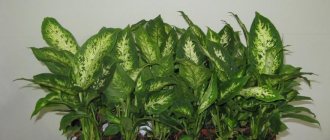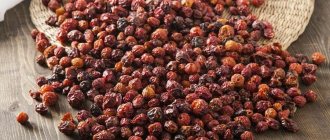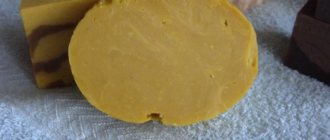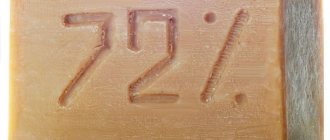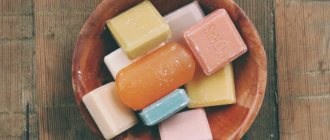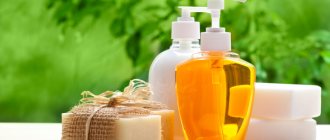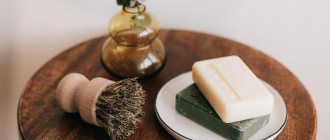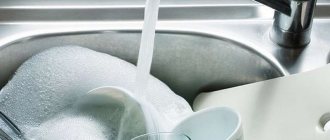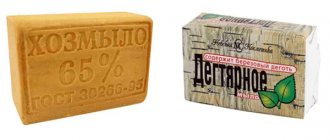The legend of the creation of soap originates in ancient Rome on the top of Mount Sapo, where the Romans worshiped their gods by making sacrifices in the form of burning animals. Melted animal fat and ashes from the fireplace flowed down to the Tiber River when it rained.
Women who washed in the river noticed that the dirt was removed from the fabrics much faster. Charcoal, which is highly alkaline, combined with animal fat to react chemically to create a detergent.
However, the first known reference to the process of making soap dates back to 2500 BC, when the Sumerians, roasting animals on fire, noticed that the fat dripping into the ashes turned into a foaming substance that made it easier to remove dirt from the body and tissues.
Hand Soap Basics
Records of the first soap made from tallow and ash date back to 2800 BC. Initially, it was used for medical purposes - they treated various skin diseases and washed wounds, which healed faster after this procedure. In Europe, soap factories appeared only in the 10th century: in France, Spain, Italy. European soap was thin, contained large amounts of olive oil, and was available only to wealthy people. French soap, which included essential oils from Provence, was considered the best.
Despite the many times improved production technology and the diversity of the range of factory products, handmade soap is now becoming increasingly popular. And it’s not surprising, because each block is unique. A home soap maker can bring any idea to life: choose a geometric or fantasy shape, give it the desired color, decorate with dried plants or mother-of-pearl. Beautiful soap can become a bright accent in your bathroom or a heartfelt gift for a loved one.
Take into account:
- Handmade soap has a short shelf life. Since there are no preservatives in the composition, it can be stored for no more than six months. It’s not worth stocking up on them for future use.
- Color may change over time and may become lighter or fade. To delay this moment, store the soap in a dark place, protected from moisture.
- Before purchasing or making your own soap, make sure that you are not allergic to the ingredients or have any contraindications. For example, rosemary essential oil increases blood pressure, so if you have hypertension, it is better to choose something else.
Hot production at the factory
The hot method is the most popular form of mass soap production due to its accelerated saponification time and the ability to use the product immediately without waiting.
Industrial production of soap began in the first decade of the last century. This product contains alkali, animal fat and vegetable oil. The soap is boiled for several days. It is believed that the longer the thermal process lasts, the better the quality of the resulting product.
When the ingredients (oil and lye) are combined, the process of “saponification of fats” begins. Natural fat breaks down into its components. As a result, glycerin and “fatty” salts are obtained, from which soap will subsequently be made.
The mixture of components must be continuously heated for several (3-4) days, then cooled and the resulting soap mass allowed to settle. Unnecessary elements dissolved in the alkali will precipitate. They are washed with water and a perfectly foaming substance is obtained. There is no need to add surfactants to such a mixture.
After cooling, the soap mass is transferred to a workshop for mechanical processing. Here the raw materials are dried and repeatedly ground. The future soap is ground in specialized machines a certain number of times to achieve uniformity and density of the structure. Dyes and perfumes, vitamins and oils are also added here.
Next, the composition is passed through an improvised meat grinder and the resulting twisted form is delivered to the molding machine. The forming equipment produces a continuous strip, which is cut into pieces of the required size. All pieces receive a manufacturer's stamp with the original logo.
Upon completion of stamping, the finished soap bars are sent to the packaging department. Here, using an automated method, each product is “dressed” in paper and placed in boxes. The final stage of production of the detergent product will be its transportation to a warehouse, from where the finished product will be sold to wholesale consumers.
Hand soap recipe: what to prepare
Tools
- Kitchen scales. The recommended measurement accuracy is at least 1 g. This accuracy is important if you plan to make small batches. Professionals who make custom products prefer jewelry scales with an accuracy of 0.1 and even 0.01 g.
- Suitable size pots. They are needed for the “water bath”.
- Melting container. Any bowl will do. Use it only for melting soap base and mixing ingredients, but do not cook food in it.
- Stirring sticks. Can be wooden or glass.
- Measuring spoons, syringes, Pasteur pipettes. Needed for easy dosing of ingredients in small doses.
- Digital Thermometer. Choose a model that can be submerged in liquids.
- Silicone or plastic molds. Plastic ones are cheaper, they are easy to wash and store, and they do not absorb aromas. Silicone ones have their own advantages - the ability to create 3D shapes and subtle patterns, high realism of soap.
- Personal protective equipment: respirator, apron, gloves, goggles.
With these tools, making handmade soap won't take much time or effort.
Ingredients
- Soap base. It comes in white, transparent and organic. White and transparent are made on the basis of glycerin, propylene glycol, sodium stearate and other components. Organic contains glycerin and saponified natural oils: palm, coconut, bay, sea buckthorn, castor. You can replace the base with regular baby soap that does not have a pronounced odor.
- Base oils. They are added only if there are no oils in the soap base or you are making soap from scratch, that is, preparing the base yourself using an alkaline solution. You can choose what you like - olive oil, grape seed oil, almond oil.
- Essential oil: mint, tea tree, orange, rose, eucalyptus, other plants. Each oil has a unique aroma and a wide range of beneficial properties, which we will discuss later.
- Dyes. You can tint your soap using coffee, chamomile infusion, curry, beet juice or ready-made water-soluble food dyes.
- Scrub ingredients: ground coffee, dried plants, oatmeal. As you cleanse, they gently exfoliate dead skin cells, leaving your skin soft and radiant.
- Decorative components: mother-of-pearl, sparkles, dried flowers, spices, mini-figurines.
There are many recipes online with different ingredients. We recommend that novice soap makers strictly follow the recommendations first and, as they gain experience, gradually begin to experiment.
By the way, if after soap making you still have base and essential oils, you can use them to make useful salt mixtures for a bath with dried flowers. They will be a wonderful gift for a friend or a delight for you. Read more in the article: “Do-it-yourself gift: unique salt mixtures.”
What tools are needed?
- Heat-resistant containers with a spout that can be heated in a microwave oven or in a water bath.
- Silicone 2D and 3D molds for soap.
- Alcohol for lubricating the surface of molds and better connecting soap layers. The alcohol must be kept in a spray bottle with a volume of 30–150 ml.
- Glass or wooden sticks for mixing the soap base.
- Thermometer for liquids.
What to buy:
- Glass measuring cup →
- Glass measuring cup with handle →
- Stainless steel measuring cup with handle →
- Silicone molds for soap →
- Digital thermometer →
- Spray bottle →
How to make soap at home in 5 steps
1. Melt the soap base. Prepare all the necessary ingredients and tools so that you have them at hand at the right time. Cut the soap base into small pieces, place in a container and place in a large saucepan in a water bath. Wait until the base is completely dissolved, while making sure that its temperature does not exceed 60 degrees. When boiling, bubbles form in the mass, which will spoil the appearance of the soap, especially transparent ones.
2. Add base oil. If you are using a ready-made base or baby soap, add base oil at the rate of one tablespoon per 100 g of soap. If you are making soap from scratch, follow the recipes. You can add one oil or several at once. With palm oil, the soap turns out to be as hard as possible, castor oil gives excellent foam, and coconut oil is responsible for the quality of cleansing. Olive oil is suitable for creating baby and hypoallergenic soap. Avoid sunflower, flaxseed and corn oils - they quickly go rancid and the soap spoils.
3. Add dye. For soap making from the base, professionals recommend choosing food colorings that do not cloud the mass and do not precipitate. 5 drops per 100 g of base is enough to give the soap a bright, rich color. When making natural soap from scratch, it is better to use mineral pigments: for example, titanium dioxide for whitening, chromium oxide for green, iron oxide for red.
4. Add essential oil. The concentration of essential oil in soap base is usually 1-4%. In made-from-scratch soap, the oil content varies depending on its volatility. Heavy oil - cedar, neroli, cinnamon - up to 1%. Light oil - orange, tea tree, eucalyptus - up to 10%.
5. Give the desired shape. Spray the selected mold with alcohol from a spray bottle. Carefully fill it with liquid soap and place it in a cool place for a couple of hours or in the refrigerator for five minutes. The packaging of the soap base usually indicates the hardening time. After the soap has hardened, dip the mold into hot water and remove it. Place on paper and leave to dry for two days.
Cold production method
The cold method is mainly used in small businesses or at home. The cold process involves heating the fat above a few degrees of its melting point. When the substrate becomes liquid, alkalis (i.e. alkali hydroxides) are added, stirring constantly until the mixture is completely emulsified.
The quickly thickening mass is poured into molds, which are covered with sheets to ensure its proper temperature. After about 48 hours, the cured soap is cut into cubes of the desired size and the curing process begins.
It lasts on average from 4 to 6 weeks. During this time, any remaining lye reacts with the remaining fat, which reduces the alkalinity of the soap, and the excess water evaporates. The additional glycerin produced during this process will remain in the soap, giving it moisturizing properties.
The cold method uses less alkali than is required to form unsaponified fat. This produces soap that is definitely softer than mass-produced soap using the hot method.
Lifehacks for making soap
Even artisans who know how to make handmade soap sometimes make mistakes when using new ingredients. We have collected 10 tips from soap makers for you to make your experiments a success.
- A light citrus aroma that quickly disappears can be retained longer with the help of woody essential oils - sandalwood, cedar, patchouli.
- To prevent pigment from forming lumps when added to soap, pre-mix it with base oil.
- Food coloring is not suitable for making multi-colored or multi-layered bars because the colors migrate into each other. This has the most unexpected effect on the appearance of the final product.
- Instead of dyes, you can add colored clay to soap: blue, yellow, red. The soap will become even more beneficial for the skin, and its color will be muted, pastel.
- If you want to add several essential oils to your soap, study the table for the correct combination. Harmonious combinations for example: mint and jasmine, rosemary and grapefruit, ginger and orange.
- When mixing ingredients, be careful to prevent bubbles from forming.
- If you are pouring soap into a large mold and then dividing it into several, use a miter box for cutting - this way the bars will be exactly the same in width.
- Soap consisting of several layers looks very beautiful. Before pouring each next layer, spray the previous one with alcohol.
- Use only well-dried pieces of fruit, seeds, flowers and herbs. Otherwise, they will quickly mold right inside the soap.
- Do not add essential oils to a hot base; wait until it cools down a bit. If the mixture is too hot, the aroma will “evaporate.”
Saponification of fats
In technology, fats are saponified in boilers by heating with alkalis or sulfuric acid.
To speed up processes, superheated steam and catalysts are used. Of the latter, the most common is a mixture of sulfonic acids, which form emulsions from fats, increasing the surface of their contact with the saponifying solution.
When fats are decomposed by sodium or potassium alkali, their salts (soaps) and glycerin are formed. The amount of reagent required for complete saponification of the oil is determined through the saponification coefficient according to the tables.
Useful properties of soap
Any hand soap recipe includes base and essential oils. Its beneficial properties largely depend on them. Let's figure out how to make handmade soap so that it brings exactly the result you need.
First, let's look at the base oils. Olive is a universal option for all skin types, including dry and sensitive. Coconut heals and whitens the skin, creates a protective film from ultraviolet radiation. Castor oil is ideal for sensitive skin.
A good solution for creating moisturizing soap is grape seed oil. It contains fatty acids that easily penetrate skin cells and nourish it. In addition, it regulates the functioning of the sebaceous glands and helps maintain good condition of oily skin.
Avocado, mango, apricot kernel, and wheat germ oils effectively fight signs of aging. Sea buckthorn accelerates wound healing and is used to get rid of acne. Cocoa butter tones and softens the skin at the same time.
Let's look at what effect you can expect from the most popular essential oils:
- Sweet orange. Rejuvenates, eliminates comedones, tightens and stimulates collagen production.
- Verbena. Works as an antiseptic and antidepressant, calming and improving mood.
- Cedar. It has a deodorizing effect and treats skin diseases.
- Lavender. Prevents the appearance of the first signs of aging and blackheads, removes irritation and restores the elasticity of blood vessels.
- Neroli. Removes rosacea, comedones and the appearance of cellulite.
- Patchouli. Perfectly softens the skin, preventing cracks. Facilitates the course of dermatoses and makes scars less noticeable.
- Tea tree. Thanks to its bactericidal, antiviral and antifungal properties, it is indispensable for frequent herpes, fungal infections, acne, eczema and other skin diseases
If you use handmade soap, only beneficial substances penetrate into your skin, and not complex chemical compounds. Natural vitamins, fatty acids and other microelements are bioactive, promoting accelerated cell regeneration. The skin retains its freshness, elasticity and firmness for a long time.
For skin types
- For oily skin, 3 effects are important: fat absorption, drying and weakening the activity of the sebaceous glands. If fat and acne are associated with seborrhea diagnosed by a dermatologist, specialized sebum-regulating compositions of medicated soap are prescribed. They additionally include anti-inflammatory, antifungal or antibacterial pharmaceutical agents.
- For pigmentation problems, depending on the cause, a scrub or cleansing along with vitamin K and acidic plant juices will help.
- For lipodystrophy (cellulite changes) in the first and second stages, body soaps help, drawing fluid from the deep layers of the skin along with micromassage (contains minerals and sea salt). In the “hard” stage, treatment with cosmetics is impossible, but the lumpy structure is partially compensated by the tightening effect.
- For dry skin , moisturizers containing antioxidants and glycerin are suitable.
- To create a “rejuvenating” effect, soaps with a peeling effect are suitable: with calcium chloride, plant acids and enzymes, vitamin A (to nourish renewed skin and stop excessive sebum synthesis). They remove dying particles and release new layers of epithelium.
When choosing soap with medicinal properties, keep in mind that after taking a bath there should be no feeling of tightness on the skin. It indicates dryness, leading to impaired skin nutrition and hyperactivity of the sebaceous glands.
Individuality is manifested not only in personality traits, but also in the sensitivity of the skin and the composition of the microflora. Therefore, do not be disappointed in the method if the first remedy did not have the same effect as in those who recovered. Do not try to destroy bacterial flora with aggressive detergents. This will make the epithelium vulnerable to dangerous fungal diseases and resistant strains of bacteria that can colonize the free space.
Where to buy ready-made handmade soap
Not everyone is ready to make handmade soap at home: recipes include many expensive ingredients, and the process itself requires time and skill. But you can’t buy it everywhere - the production features do not allow the production of large quantities. Look for a natural product in stores that specialize in natural cosmetics. Don't trust general information, always look for brand information.
Example
Determine the amount of alkali required to saponify 1000 g of pork fat.
The weight of the oil should be multiplied by the saponification factor: 1000 g × 0.141 = 141 g.
In industry, alkali is used in the form of a 40% solution. For the saponification reaction, the amount of sodium alkali solution required is: 141/0.4 = 352.5 g. If potassium alkali is used, then it will require 1000 g × 0.198/0.4 = 495 g.
Laundry soap is made from waste vegetable or animal oils, the saponification number of which can be within a certain range. When producing soap, the free alkali content in the product is first analyzed, and then the required amount of the missing component is added, and the reaction is completed.
The degree of unsaturation of fats is characterized by the iodine number: the lower it is, the harder the soap is (value below 55) and the longer it is stored.
DIY soap flowers
If you are a creative person and like to make crafts with your own hands, then you can make flowers from soap yourself. Some doubt creeps in - is this possible, since the soap base is not plastic? To make the material softer, you need to use a little trick when preparing the base.
To prepare it you will need:
- base (soap) or baby soap - 230 grams
- regular gelatin, which is sold in supermarkets - one large spoon
- water or herbal decoction - 8-9 large spoons
- dyes, aromatic oils - optional
- regular knife, potato peeling knife
Roses from soap base
Procedure
- Pour gelatin with water (cold), leave for 43-56 minutes to swell
- Prepare the base - grate it, melt it, add a teaspoon of water.
- Then pour aromatic oils, dye, etc. into the base, mix the resulting mass with the prepared gelatin
- Pour the mixture into round molds
- When it hardens, pull out the resulting cylinders
- Now all that remains is to use a vegetable knife to cut the petals for the rose and mold the flower, as if from plasticine
DIY soap rose
You can also make flowers simply in special molds. It is enough to fill the container and, a few minutes after hardening, take the finished flower out of it. Any flight of fancy is welcome. You can come up with different shades for the flower and leaves.
Soap “Rose”, made in a special silicone mold
If you have artistic talents and have the skills of a sculptor, then carving (cutting out figures) will be easy for you. Below you can watch a video tutorial for beginner soap makers.
Carving - carved flower
Remember
- Making soap from scratch is cost effective, but involves hard physical labor.
- The use of caustic liquids requires enhanced safety precautions and the use of personal protective equipment.
- There is only enough space in your own kitchen to make small batches. If production increases, a separate room will be required.
- Earnings will be higher if you actively promote the product among its target group, advertising through free channels and selling in large quantities.
Happy business and see you again!
( 5 ratings, average: 4.80 out of 5)
DIY liquid soap from soap remnants
The crisis forces us to save on everything. But this process sometimes turns into a very pleasant, useful activity. After all, you can make healthy liquid soap from leftover soap.
Gentle liquid soap
Preparation
- Finely grate the remaining soap
- Boil the water
- Mix soap, boiling water in a glass jar
- Then add citrus juice (for flavor), glycerin - one spoon
- Mix the solution again and pour into a container with a dispenser.
- Leave to infuse for two to three days (do not forget to shake the gel periodically), after which you can use it
DIY liquid soap
Saponification of fatty acids
A suitable substance is selected for the raw material from which laundry soap is made to carry out the reaction. Unlike fats, fatty acids are easily saponified by soda ash and potassium carbonate when cooked in an open kettle. It should be taken into account that the product contains up to 7% undigested fat. In this regard, at the end of cooking, a little alkali is added to saponify it.
If we ask the question of what laundry soap is made from now, then in industrial conditions it is easiest to use fatty acids. The process is less energy-consuming, and instead of expensive alkali, soda ash can be used.
The process of making soap from fatty acids is 2 times faster. They are introduced in small portions into a solution of soda ash to prevent the release of foam formed by the released carbon dioxide.
If the raw material is of sufficiently high quality, it is saponified directly in a boiler, bringing the amount of saponified product to 40-47%. The soap is then cooled and cut into pieces.
Low-grade fatty acids are salted out during the cooking process, separating the soap core. At the same time, it is purified and a high-quality product with a higher concentration is obtained.
A bar of soap is imprinted with a fatty acid content of 64 to 72%. Many people are interested in what laundry soap 72 is made from, which lasts longer and has high cleaning properties.
The technology for its production is no different from others, only salting out is done at least 2 times to obtain a sufficiently high concentration of saponified fatty acids.
What are the dangers of synthetic additives?
Synthetic additives present in store-bought soap significantly reduce its cost, but cause dryness, tightness, irritation and flaking of the skin, as well as various allergic reactions. Important! In some cases, chemical components of hygiene products can provoke diseases such as bronchial asthma, chronic runny nose or eczema. The most dangerous synthetic additives included in regular store-bought soap include: surfactants, solvents, stabilizers, artificial colors, fragrances and fragrances.
Soap classification
Soaps are classified according to the following criteria.
I. According to the characteristics of reaction with water:
- soluble alkaline – potassium, sodium and ammonium salts of higher carboxylic acids;
- insoluble metal - salts of other metals.
II. According to the state of aggregation:
- liquid – potassium and ammonium salts;
- solid - salts of sodium, lithium and other metals.
III. By area of application:
- household (used for washing things);
- medical (contain disinfectants);
- toiletries (used for washing the body), etc.
Staff
Setting up a small soap factory does not require large staff.
At first, you need a technologist. A soap-making specialist can be outsourced to help set up production and select the appropriate formula (recipe).
In the workshop, 2 people can operate the equipment. One more worker is needed for packaging and storing finished products. Personnel involved in production must have medical records, special clothing and respirators.
The company will require the services of a sales manager and a marketer. One will be involved in searching for sales channels, the second will be involved in advertising, attracting buyers to a new product on the market.
The accountant will take care of all document management matters. You can hire him on a remote basis.
A forwarder will be required to transport raw materials and finished products.
DIY coffee soap
Most often, soap with black, ground coffee is used as a natural scrub for the skin. Ground black coffee is suitable for adding to the base, and coffee beans as a decoration. Spent coffee grounds should not be used for soap making, because there are no useful components left for the structure of the skin.
Coffee soap-scrub
- RECIPE : Melt the white base (100 grams) in the microwave. Add two large spoons of ground coffee. Then pour in a small spoon of cocoa butter. Add some brown dye there. Pour into molds
- RECIPE : Rub two pieces of baby soap. Pour water (150 grams) into a bowl and melt the mixture. Add three teaspoons of olive oil and the same amount of sugar. At the end, add a teaspoon of cream and coloring. Pour into molds, let harden
Homemade soap from baby soap and coffee
Room
To organize a business you do not need a large premises. An area of 70 square meters is sufficient. m, where there will be a workshop with equipment and a storage room.
In the workshop it is necessary to install communications (good lighting, power supply (380 W), water supply, sewerage, heating), and make a fire protection system. A ventilation system will be required when using aromatic fragrances. The walls of the workshop are covered with ceramic tiles - they wash well and do not accumulate foreign substances or odors.
The mini-factory premises itself should be far from residential areas (no closer than a kilometer). It is better to select a property in an industrial area of the city or in a nearby suburb.
Hard water (without iron and manganese impurities) should not be used in production, therefore it is better to install water purification filters.
Antibacterial soap
It is a common cleaning agent in hospitals and public facilities. This product is produced in liquid form and is chosen for disinfection and elimination of various bacteria.
Antibacterial soap contains triclosan or triclocarban. These are antimicrobial elements that neutralize the effects of most microorganisms. Note that they kill both harmful and beneficial bacteria.
Triclosan and triclocarban, which are found in antibacterial soaps, leave active residues on surfaces. Therefore, the protective effect of the product lasts for a long time. However, you can easily use regular bar soap in your daily life as it will provide the same protective effect if you wash your hands regularly.
